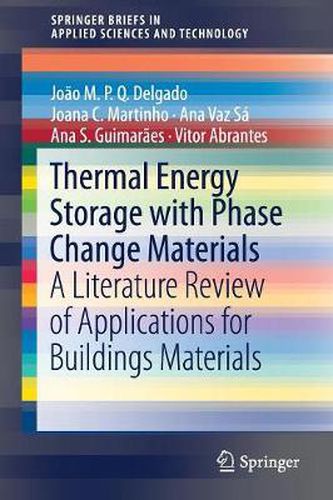Readings Newsletter
Become a Readings Member to make your shopping experience even easier.
Sign in or sign up for free!
You’re not far away from qualifying for FREE standard shipping within Australia
You’ve qualified for FREE standard shipping within Australia
The cart is loading…






This title is printed to order. This book may have been self-published. If so, we cannot guarantee the quality of the content. In the main most books will have gone through the editing process however some may not. We therefore suggest that you be aware of this before ordering this book. If in doubt check either the author or publisher’s details as we are unable to accept any returns unless they are faulty. Please contact us if you have any questions.
This short book provides an update on various methods for incorporating phase changing materials (PCMs) into building structures. It discusses previous research into optimizing the integration of PCMs into surrounding walls (gypsum board and interior plaster products), trombe walls, ceramic floor tiles, concrete elements (walls and pavements), windows, concrete and brick masonry, underfloor heating, ceilings, thermal insulation and furniture an indoor appliances.
Based on the phase change state, PCMs fall into three groups: solid-solid PCMs, solid-liquid PCMs and liquid-gas PCMs. Of these the solid-liquid PCMs, which include organic PCMs, inorganic PCMs and eutectics, are suitable for thermal energy storage.
The process of selecting an appropriate PCM is extremely complex, but crucial for thermal energy storage. The potential PCM should have a suitable melting temperature, and the desirable heat of fusion and thermal conductivity specified by the practical application. Thus, the methods of measuring the thermal properties of PCMs are key.
With suitable PCMs and the correct incorporation method, latent heat thermal energy storage (LHTES) can be economically efficient for heating and cooling buildings. However, several problems need to be tackled before LHTES can reliably and practically be applied.
$9.00 standard shipping within Australia
FREE standard shipping within Australia for orders over $100.00
Express & International shipping calculated at checkout
This title is printed to order. This book may have been self-published. If so, we cannot guarantee the quality of the content. In the main most books will have gone through the editing process however some may not. We therefore suggest that you be aware of this before ordering this book. If in doubt check either the author or publisher’s details as we are unable to accept any returns unless they are faulty. Please contact us if you have any questions.
This short book provides an update on various methods for incorporating phase changing materials (PCMs) into building structures. It discusses previous research into optimizing the integration of PCMs into surrounding walls (gypsum board and interior plaster products), trombe walls, ceramic floor tiles, concrete elements (walls and pavements), windows, concrete and brick masonry, underfloor heating, ceilings, thermal insulation and furniture an indoor appliances.
Based on the phase change state, PCMs fall into three groups: solid-solid PCMs, solid-liquid PCMs and liquid-gas PCMs. Of these the solid-liquid PCMs, which include organic PCMs, inorganic PCMs and eutectics, are suitable for thermal energy storage.
The process of selecting an appropriate PCM is extremely complex, but crucial for thermal energy storage. The potential PCM should have a suitable melting temperature, and the desirable heat of fusion and thermal conductivity specified by the practical application. Thus, the methods of measuring the thermal properties of PCMs are key.
With suitable PCMs and the correct incorporation method, latent heat thermal energy storage (LHTES) can be economically efficient for heating and cooling buildings. However, several problems need to be tackled before LHTES can reliably and practically be applied.